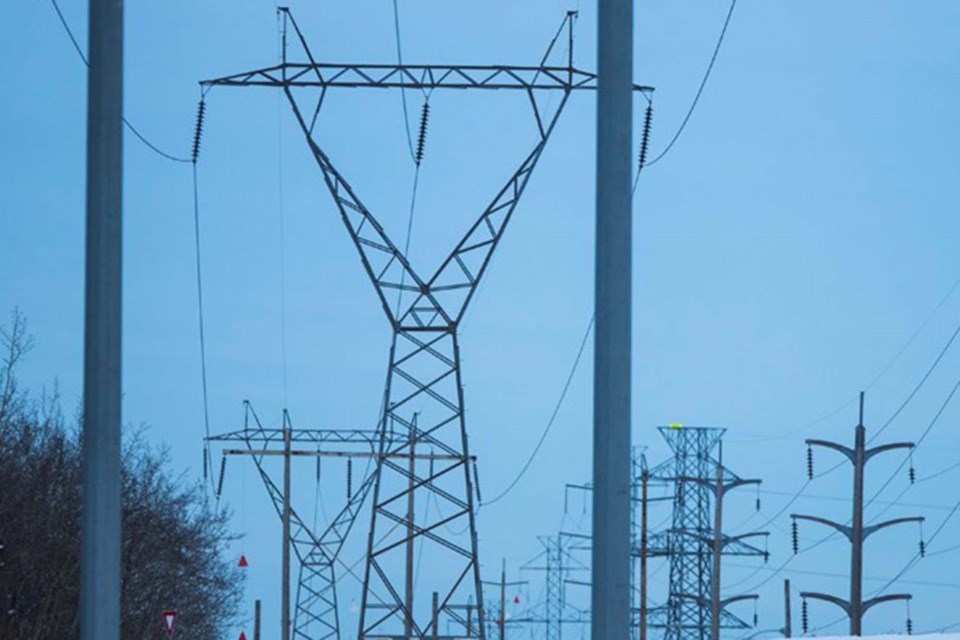The federal government needs to invest more money to move the electricity grid to reach Ottawa's climate goals, say experts in the field.
Last week the federal government released its annual budget, setting aside $600 million for electricity transmission upgrades, which Morinville-St. Albert MLA and Associate Minister of Natural Gas and Electricity Dale Nally says isn’t enough.
“That would build one line in Alberta, and so the true cost to upgrade the transmission in Alberta alone will be multiple billions of dollars,” Nally said, adding that to upgrade the whole country it will cost even more.
“[The federal government] has not been transparent about the true cost of their de-carbonization aspirations.”
Nally said the industry has zero confidence Alberta can achieve the climate goals set out for the electricity grid — net zero by 2035 — and the announcement amounts to "an unworkable plan."
"It is childlike ambition," Nally said, adding the province wasn't consulted on any of the goals or plans, and the industry didn't receive any meaningful consultation.
Binnu Jeyakumar, director of clean energy at the Pembina Institute, said if the federal government wants to be ambitious with its climate goals, it must invest much more in clean electricity over the next five years.
“I think we can be a lot more ambitious in terms of the magnitude of investment,” Jeyakumar said.
The Pembina expert said Alberta has one of the dirtiest grids in Canada, and still has a long way to go reach the federal government's goal of de-carbonizing the grid by 2035. Right now, Alberta has a generation intensity of 602 g CO2 eq/kWh — a ratio measuring CO2 emissions from public electricity production —compared to a national average of 120 g CO2 eq/kWh
Alberta has dramatically accelerated the phase-out of coal power, which is set to be phased out by 2023, Jeyakumar said, even though the goal was 2030.
“One of the things that has facilitated this fast transition is that we are fuel switching from burning coal to burning natural gas. That's made it easier to take that first step, but now we have to deal with all these natural-gas assets,” Jeyakumar said.
“In a de-carbonized grid, you cannot have natural-gas assets that don't have [carbon capture, utilization, and storage] attached to them.”
Now the question for Alberta is how to replace natural gas, the expert said, and the province faces unique challenges.
Alberta has fewer electricity ties with other provinces compared to most provinces, making it more difficult to share the resource inter-provincially, Jeyakumar said. Alberta also has a large industrial load that must be catered to, which is a challenge.
The best way to reach the net-zero target by 2035 would require a plan by the provincial government, which Jeyakumar said isn’t happening, although the Alberta Electricity System Operatory has started to explore a pathway to get there.
But Nally said the province, which has the only deregulated electricity market in Canada, will continue to support a market-based approach to solving challenges with the electricity grid.
“[Companies] built significant investments based on the market-based approach and to change that now, it would be it would be disastrous for investors to make significant investments based on a particular market and then, all of a sudden, government decides that they're not going to have a free and open market,” Nally said.
The free and open market has made Alberta a destination for renewable energy companies, and Nally said and there is no need to change that right now.
“Our market is working. We’ve got more generation coming online, much of it is renewable,” Nally said.
Along with investing in enhancing the electricity grid, the federal government has started a Pan-Canadian Grid Council to establish national standards, best practices, and incentives to promote infrastructure investments, smart grids, grid integration, and electricity sector innovation, with the goal of making Canada the most reliable, cost-effective, and carbon-free electricity producer in the world.
Jeyakumar said the move will be a good one, because electricity is currently a provincial jurisdiction, and the council will help propose policy solutions to deal with a divided electricity grid across Canada.
Ottawa has also set aside $25 million in regional strategic initiatives to promote any kind of regional collaborations between provinces that share borders.
“Together, all of this is a good first step to get to a clean grid,” Jeyakumar said.
Nally said the province is still doing some analysis on the regional and national initiatives, because the province is the only deregulated market in Canada. Nally said Alberta wants to make sure any regional initiatives don’t reduce generation that is available to the Alberta consumer, because that will mean higher costs for ratepayers.
Right now in Alberta, roughly 65 per cent of the maximum capacity on the grid is coming from gas, with coal making up 7.6 per cent of the generation. Some 25 per cent of the maximum capacity on the grid is generated through renewable sources such as hydro, solar, and wind.



